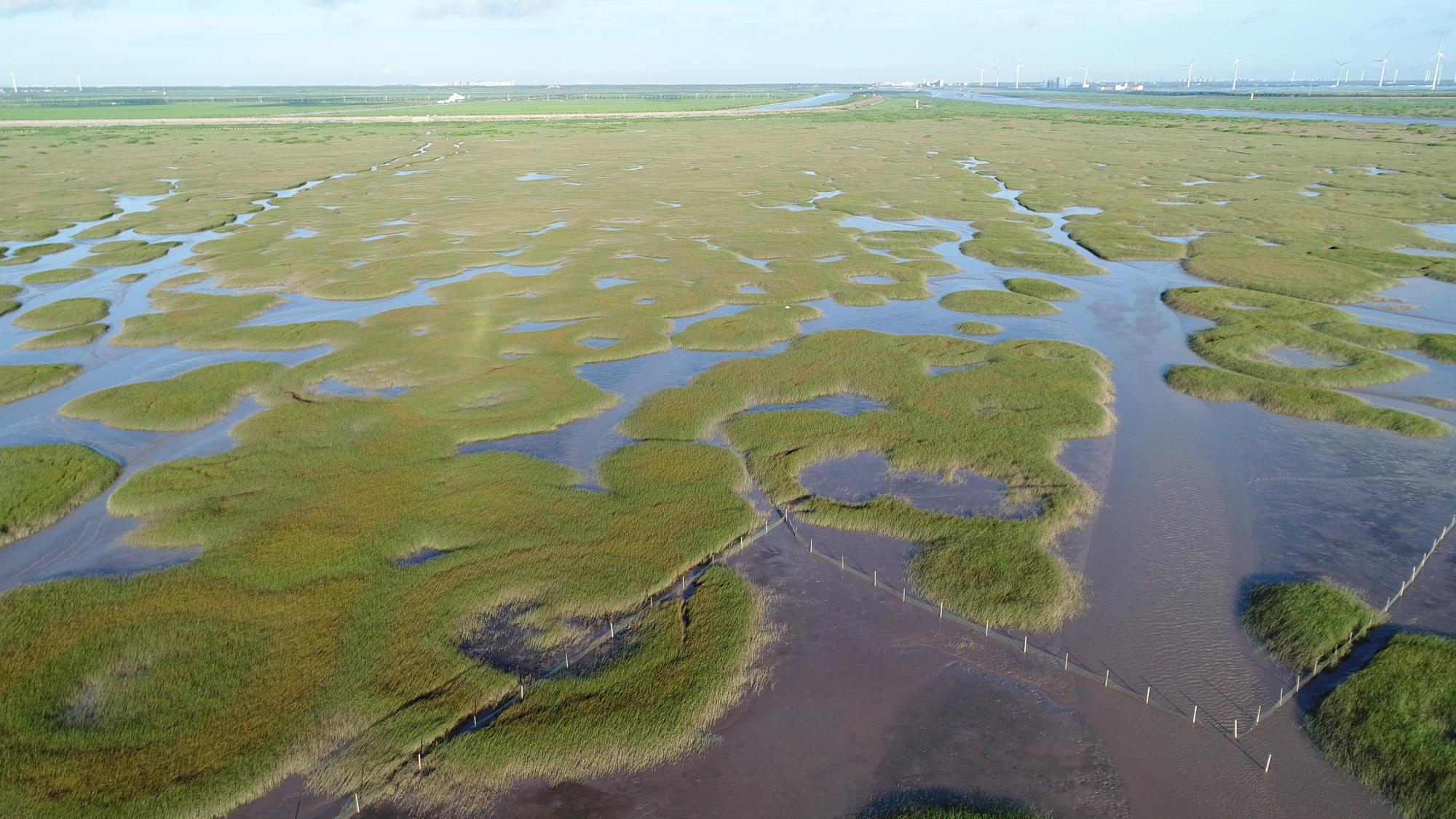Coastal Saltmarsh Ecosystmes
How self-organized patterns shape the ecosystem functionings?

Self-organization has long fascinated ecologists attribute to ecosystems with self-organizing biotic feedbacks that substantially influence ecological stability and resilience of responses. it can be viewed as the process of reestablishing both exogenous drivers and internal feedbacks that maintain ecosystem in a desirable state. However, our understanding on such self-organized patterns has been mostly restricted to regular spatial patterns, leaving it unclear if self-organization underpins irregular patterning. Here, we combined in-situ experiments and field investigations to demonstrate that scale-dependent feedback as a typical self-organization mechanism underpins the irregular patterning of the saltmarsh vegetation dominated by Scirpus mariqueter (left photos). We reveal that this self-organization process is associated with modifications of a range of plant functional traits as well as enhanced vegetation productivity, and that the self-organized saltmarsh vegetation patterns can create a better micro-habitat for macrobenthos, promoting their total abundance and spatial heterogeneity of species diversity.
Relevant Publications
Li-Xia Zhao, Chi Xu, Zhen-Ming Ge, Johan van de Koppel and Quan-Xing Liu, The shaping role of self-organization: linking vegetation patterning, plant traits and ecosystem functioning, Proc. Roy. Soc. B, 2019 (286): 2589. doi: 10.1098/rspb.2018.2859.

How do fair circle patterns form in saltmarshes?
